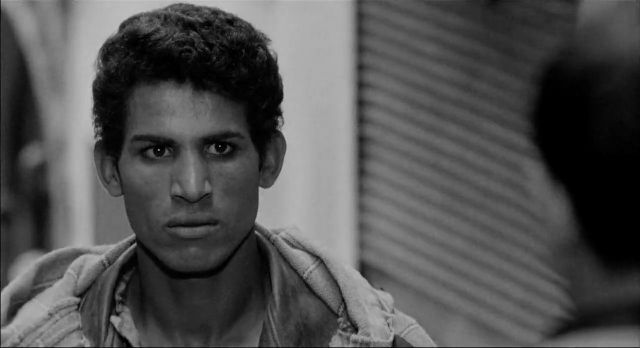The Battle of Algiers (1966) 
“The Revolt that Stirred the World!”

Director: Gillo Pontecorvo
Cast: Brahim Hadjadj, Jean Martin, Yacef Saadi
Synopsis: In the 1950s, fear and violence escalate as the people of Algiers fight for independence from the French government.
The Battle of Algiers, Gillo Pontecorvo’s ground-breaking depiction of the urban guerrilla campaign waged by the FLN, an underground terrorist group operating in Algeria’s capital city in the 1950s, looks very much like a modern film. Shot in a verite style with hand-held cameras, cinematographer Marcello Gatti frequently placed himself in the centre of the events depicted in order to immerse the viewer in the action. So realistic are the scenes that he captured that a disclaimer had to be inserted after the movie’s opening credits stating that none of the footage was real. The film has apparently become required viewing for both terrorists and counter—terrorist organisations, and serves pretty much as a text book on how not to wage war on urban terrorism.
Shot in stark black-and-white, The Battle of Algiers follows both sides as the guerrilla warfare escalates throughout the 1950s. Ali La Pointe (Brahim Haggiag), a young street thug, is indoctrinated into the FLN after witnessing the beheading of a political activist while in prison. He is given the task of shooting a police officer in the street as a test, not knowing that the gun isn’t loaded. So committed is Ali that, instead of shooting the policeman in the back as instructed, he faces him and makes a political speech before pulling the trigger. His commitment impresses Djafar (Yacef Saadi), one of the FLN’s leaders, and Ali quickly rises through the ranks.
The French military is represented by Colonel Matthieu (Jean Martin), who was once a freedom-fighter himself as a member of the resistance in Nazi-occupied France during WWII. Matthieu possesses the disciplined demeanour of the professional soldier and a shrewd strategist’s viewpoint. He understands the structure of the FLN, the way it is organised so that any member only knows three others within the group: the person who recruited him, and the two men he himself subsequently recruited. He knows that the threat of the FLN will only be wiped out when its top man is eliminated.
The terrorists use women to smuggle and plant their bombs in the city’s cafes and restaurants, and to ferry weapons to and from the regular street assassinations of police officers. In one particularly chilling scene we see a pretty, Westernised young woman plant a bomb in a crowded cafe and then coolly survey the patrons who will soon become her victims: lovers chatting in apparent oblivion to their surroundings, a small boy licking an ice cream. In contrast, the French soldiers on the street seem almost naive in their interactions with the natives.
Despite the close intimacy of Pontecorvo’s camera to the events depicted on screen, the tone of the movie remains resolutely dispassionate, which is essential if it is to maintain a neutral position and show no favouritism toward either side. The twisting, maze-like stepped alleyways of the Casbah not only provide an ideal landscape into which the terrorists can disappear at a moment’s notice, but also seem to provide no refuge for human emotion. The casualties of this war are merely numbers, stripped of character and dignity, and cynically exploited by both sides. This dehumanising tactic serves effectively in illustrating the pointlessness of the tit-for-tat manoeuvres of both sides. In one scene we see the police plant a bomb in the Muslim quarter of the city, an act which earns the reprisal of three planted by the terrorist’s women in the European quarter. Even if The Battle of Algiers hadn’t been filmed in such an innovative fashion that was way ahead of its time, the movie’s message would have made it timeless, anyway.
(Reviewed 26th March 2013)
httpv://www.youtube.com/watch?v=Ca3M2feqJk8
